CG Trader

CNC Machine
by CG Trader
Last crawled date: 1 year, 10 months ago
CNC redirects here. For other uses, see CNC (disambiguation).
Numerics redirects here. For the field of computer science, see Numerical analysis.
Numerical control (also computer numerical control, and commonly called CNC) is the automated control of machining tools (such as drills, lathes, mills, grinders, routers and 3D printers) by means of a computer. A CNC machine processes a piece of material (metal, plastic, wood, ceramic, or composite) to meet specifications by following coded programmed instructions and without a manual operator directly controlling the machining operation. A CNC machine is a motorized maneuverable tool and often a motorized maneuverable platform, which are both controlled by a computer, according to specific input instructions. Instructions are delivered to a CNC machine in the form of a sequential program of machine control instructions such as G-code and M-code, and then executed. The program can be written by a person or, far more often, generated by graphical computer-aided design (CAD) or computer-aided manufacturing (CAM) software. In the case of 3D printers, the part to be printed is sliced before the instructions (or the program) are generated. 3D printers also use G-Code. CNC is a vast improvement over non-computerized machining that must be manually controlled (e.g. using devices such as hand wheels or levers) or mechanically controlled by pre-fabricated pattern guides (see pantograph mill). In modern CNC systems, the design of a mechanical part and its manufacturing program are highly automated. The part's mechanical dimensions are defined using CAD software and then translated into manufacturing directives by computer-aided manufacturing (CAM) software. The resulting directives are transformed (by post processor software) into the specific commands necessary for a particular machine to produce the component and then are loaded into the CNC machine. Since any particular component might require the use of several different tools – drills, saws, etc. – modern machines often combine multiple tools into a single cell. In other installations, several different machines are used with an external controller and human or robotic operators that move the component from machine to machine. In either case, the series of steps needed to produce any part is highly automated and produces a part that closely matches the original CAD drawing.
Motion is controlling multiple axes, normally at least two (X and Y),[3] and a tool spindle that moves in the Z (depth). The position of the tool is driven by direct-drive stepper motors or servo motors to provide highly accurate movements, or in older designs, motors through a series of step-down gears. Open-loop control works as long as the forces are kept small enough and speeds are not too great. On commercial metalworking machines, closed-loop controls are standard and required to provide the accuracy, speed, and repeatability demanded. equipment machinery industrial tool medicine machine technology illustration business chemistry scientific industry presentation robot science advertising architecture isolated closeup contemporary industrial machine
Numerics redirects here. For the field of computer science, see Numerical analysis.
Numerical control (also computer numerical control, and commonly called CNC) is the automated control of machining tools (such as drills, lathes, mills, grinders, routers and 3D printers) by means of a computer. A CNC machine processes a piece of material (metal, plastic, wood, ceramic, or composite) to meet specifications by following coded programmed instructions and without a manual operator directly controlling the machining operation. A CNC machine is a motorized maneuverable tool and often a motorized maneuverable platform, which are both controlled by a computer, according to specific input instructions. Instructions are delivered to a CNC machine in the form of a sequential program of machine control instructions such as G-code and M-code, and then executed. The program can be written by a person or, far more often, generated by graphical computer-aided design (CAD) or computer-aided manufacturing (CAM) software. In the case of 3D printers, the part to be printed is sliced before the instructions (or the program) are generated. 3D printers also use G-Code. CNC is a vast improvement over non-computerized machining that must be manually controlled (e.g. using devices such as hand wheels or levers) or mechanically controlled by pre-fabricated pattern guides (see pantograph mill). In modern CNC systems, the design of a mechanical part and its manufacturing program are highly automated. The part's mechanical dimensions are defined using CAD software and then translated into manufacturing directives by computer-aided manufacturing (CAM) software. The resulting directives are transformed (by post processor software) into the specific commands necessary for a particular machine to produce the component and then are loaded into the CNC machine. Since any particular component might require the use of several different tools – drills, saws, etc. – modern machines often combine multiple tools into a single cell. In other installations, several different machines are used with an external controller and human or robotic operators that move the component from machine to machine. In either case, the series of steps needed to produce any part is highly automated and produces a part that closely matches the original CAD drawing.
Motion is controlling multiple axes, normally at least two (X and Y),[3] and a tool spindle that moves in the Z (depth). The position of the tool is driven by direct-drive stepper motors or servo motors to provide highly accurate movements, or in older designs, motors through a series of step-down gears. Open-loop control works as long as the forces are kept small enough and speeds are not too great. On commercial metalworking machines, closed-loop controls are standard and required to provide the accuracy, speed, and repeatability demanded. equipment machinery industrial tool medicine machine technology illustration business chemistry scientific industry presentation robot science advertising architecture isolated closeup contemporary industrial machine
Similar models
cg_trader
$11

CNC Machine
...chnology equipment machine machinery electronics mechanical tool robot power connection electricity industrial industrial machine
grabcad
free

CNC machine
...ifications by following a coded programmed instruction and without a manual operator directly controlling the machining operation
cg_trader
$18

CNC Machine
...ifications by following coded programmed instructions and without a manual operator directly controlling the machining operation.
grabcad
free

CNC Machine
...mputer software, which is embedded inside the tools. cnc is commonly used in manufacturing for machining metal and plastic parts.
grabcad
free

CNC Router Machine
...are embedded in a microcomputer attached to the tool. it is commonly used in manufacturing for machining metal and plastic parts.
grabcad
free

CNC Create Programming Instruction Works Machine Tools Manufacturing Process
...cnc create programming instruction works machine tools manufacturing process
grabcad
computer numerical control programming
grabcad
free

CNC milling design.
...e end result of the machining process is a specific part or product that is created using a computer aided design (cad) software.
grabcad
free

CNC Router
...e opposite of “old-school” devices that are manually controlled by hand wheels or levers, or mechanically automated by cams alone
grabcad
free

CNC Router
...ntrolled machine that uses computer programming to control a high speed rotating cutter to perform cutting and shaping operations
grabcad
free

CNC Milling Machine
... 3d profile. use cam software to make the program g code to instruct servo motor then the cutter moving along the path of g code.
Cnc
3d_export
$35

Cnc
...cnc
3dexport
the cnc machine is unfinished
3d_export
$10
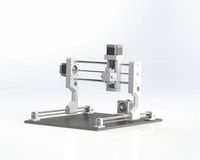
cnc router
...cnc router
3dexport
prototipe cnc router
3d_export
$10
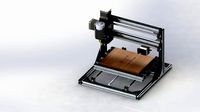
cnc machine
...cnc machine
3dexport
cnc machine model with individual model files with assembly
3d_export
$5
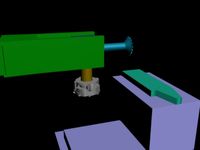
Cnc 3D Model
...cnc 3d model
3dexport
cnc
cnc 3d model csiszar 61289 3dexport
turbosquid
$10

cnc bedroom
...osquid
royalty free 3d model cnc bedroom for download as max on turbosquid: 3d models for games, architecture, videos. (1494981)
turbosquid
$9
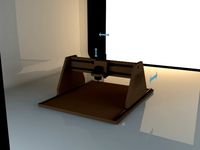
cnc(wood)
...rbosquid
royalty free 3d model cnc(wood) for download as max on turbosquid: 3d models for games, architecture, videos. (1189189)
turbosquid
$1

CNC Frame
...rbosquid
royalty free 3d model cnc frame for download as stl on turbosquid: 3d models for games, architecture, videos. (1371706)
turbosquid
free

cnc table
...rbosquid
royalty free 3d model cnc table for download as max on turbosquid: 3d models for games, architecture, videos. (1500926)
turbosquid
$30
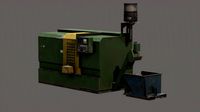
CNC Lathe
...
royalty free 3d model cnc lathe for download as max and obj on turbosquid: 3d models for games, architecture, videos. (1284634)
turbosquid
$25
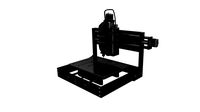
CNC Machine
...
royalty free 3d model cnc machine for download as ma and fbx on turbosquid: 3d models for games, architecture, videos. (1307199)
Machine
archibase_planet
free
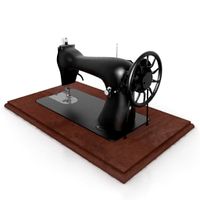
Machine
...machine
archibase planet
sewing-machine sewing machine equipment
singer machine- 3d model for interior 3d visualization.
archibase_planet
free
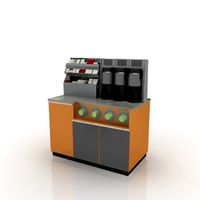
Machine
...hine
archibase planet
percolator equipment coffee-machine
machine n230708 - 3d model (*.gsm+*.3ds) for interior 3d visualization.
archibase_planet
free
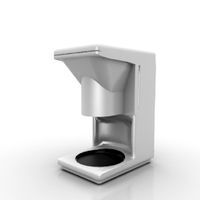
Machine
...chibase planet
percolator coffee-machine kitchen equipment
coffee machine - 3d model (*.gsm+*.3ds) for interior 3d visualization.
archibase_planet
free
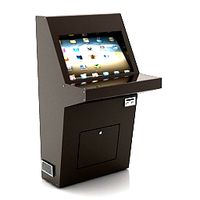
Slot machine
...ase planet
slot machine slot-machine playing machine
slot machine n260311 - 3d model (*.gsm+*.3ds) for interior 3d visualization.
turbosquid
$7

Machine
...ne
turbosquid
royalty free 3d model machine for download as on turbosquid: 3d models for games, architecture, videos. (1391792)
3d_ocean
$10
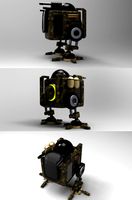
War machine
...war machine
3docean
camuflage machine robot war war machine
war machine created in 3dmax 2009 15.497-poly count
turbosquid
$7
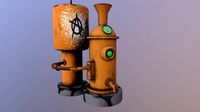
machine
...turbosquid
royalty free 3d model machine for download as obj on turbosquid: 3d models for games, architecture, videos. (1452674)
3d_ocean
$12
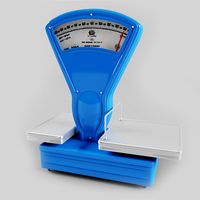
Weighing-machine
...weighing-machine
3docean
market shop weighing-machine
3d model weighing-machine
archibase_planet
free

Sewing machine
...ine
archibase planet
sewing machine sewing-machine
sewing machine n080311 - 3d model (*.gsm+*.3ds) for interior 3d visualization.
archibase_planet
free
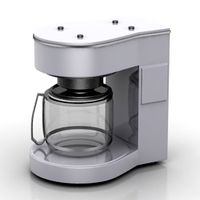
Coffee machine
...se planet
coffee machine percolator coffee-machine
coffee machine n010715 - 3d model (*.gsm+*.3ds) for interior 3d visualization.
